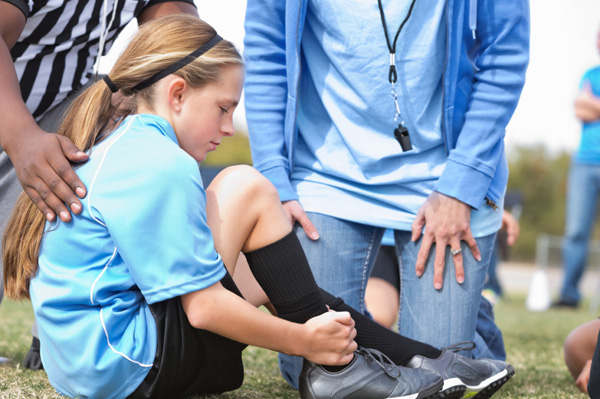Youth sports and other movement-related injuries are at an all time high.
According to the Center for Disease Control, over 10 million youngsters paid a visit to the emergency room for sports and other movement-related injuries.
While with any activity, injuries cannot be completely prevented, research has demonstrated that there are some strategies to decrease the occurrence of the most likely causes of injury in youth.
Outside of creating a safe, hazard-free environment and using proper safety equipment, there are a variety of interventions that fitness educators and practitioners can employ to decrease the likelihood of movement related injury during class, practice, or training time.
Here are a few tips to help kids stay injury free and moving for life!
1. Improve overall fitness, coordination and strength!
The inactivity of our youth has created a decrease in strength, balance, and coordination over the years. While free time inactivity is at an all time high, so is participation in sports!
Kids do nothing, and then play in practices, scrimmages, and games. This decreases their level of general physical skill.
The increased physical demand of sports combined with the decreased general physical capacity of our youth has created an injury epidemic.
Improving general strength, fitness, coordination, balance, and power have all been demonstrated to decrease the likelihood of movement related injuries in youngsters.
Here is a SPIDERfit circuit to help improve strength and coordination to prevent injury! Use this as a warm-up or conditioning drill.
2. Take a break!
More and more children are specializing in one sport or activity at a very young age. This creates the same demands on the same muscles, joints, tendons, and ligaments every time they participate. Over time, this causes fatigue and inflammation.
Some experts suggest nearly 50% of injuries reported in emergency rooms are due to overuse.
To avoid overuse, experts recommend athletes participate in a variety of activities (particularly ones that focus on general physical preparation ), take time away from a sport every year, and monitor increases in weekly participation days, hours, etc. (keeping increases under 10%)
3. Progress and Regress Appropriately
Any given exercise setting can have a variety of different ages and levels of coordination and fitness.
This provides a challenge to offer appropriate activities for all kids involved. When activities are outside of a youngsters capabilities, it increases the likelihood of injury.
An effective movement assessment model in which specific needs can be targeted and appropriately scaffolded is a powerful injury prevention strategy.
For example, instead of assessing maximal output (push-ups, etc.) assess the quality of essential coordinative movement patterns like skipping, crawling, object control, balance, etc.
Based on their score, needs can be targeted by simply providing different color activities at stations for different assigned “colors” of proficiency.
For example at a push-up station, there could be 2 kids that can do push-ups (red), one that can’t even get into the position (Green), and another who does them extremely poorly (Blue).
- Red: Push-ups
- Blue: Standing Planks
- Green: Bear Walks
This allows for kids to participate at a safe, effective level and always have opportunities to improve!
Employ these three strategies during class, practice, or training sessions and help create future of happy, healthy, pain-free adults!
Brett Klika CEO and co-founder of SPIDERfit is an international award- winning certified strength and conditioning coach, author, and motivational speaker with over 20 years experience motivating and inspiring youngsters to a life of health, fitness, and performance.
Brett consults with schools, athletic organizations, fitness professionals, and fortune 500 companies around the world.





Connect with SPIDERfit!